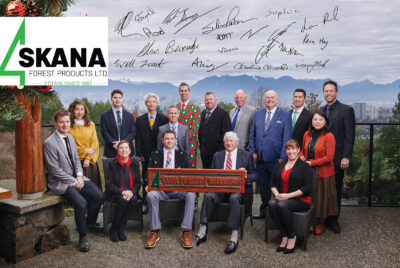Across the Southeast region sources had mixed feelings as to how the overall market was going, at the time of this writing. Some sources noted that their markets are better than they have been over the past six months and others said that while their sales aren’t as high as they have been, trends seem to be getting back to where they were pre-pandemic.
In Alabama a lumber salesman said, “We have been watching the market as it trends up and down over the past couple of months. We are buying as needed for jobs that are coming up.”
He said that the market seems better than it was six months ago. “There seems to be more availability out there on products. Shipping times have gotten better and so have the prices,” he remarked.
His company deals with Southern Yellow Pine and Spruce-Pine-Fir in grades No. 1 Common, No. 2 Common and No. 3 Common. “We handle these in panels and 2x material, as well as any and all posts and timber from 4×4 to 12×12,” he added.
He sells directly to the consumer, whether that be a developer, general contractor or a framing crew. He said that his customers haven’t directly commented on how their markets are, but their purchases indicate more projects coming up.
He noted that while transportation is always affecting his company from time to time, it is not causing them many issues right now. He said, “It depends on where the product is going, what kind of mode of transportation is being used.”
In Virginia a lumber spokeswoman said that she has noticed the market begin to slow down. “It’s slower than it was six months ago, the housing market isn’t what it was, and it feels like we are headed into a recession,” she said.
She said that her company handles Southern Yellow Pine in grades No. 1 Common, No. 2 Common, No. 3 Common and No. 4 Common, in thicknesses of 2-inch and 4-inch.
She said that they sell to a variety of customers, and that they have not offered any comments on how their products are doing.
She said that when it comes to transportation the biggest issue for her company is fuel prices. “It is continuing to affect our bottom line,” she stated.
A sawmill representative in Georgia said, “Compared to the last three years, right now is awful, but prior to that it’s about normal.” He mentioned that the market is worse than it was six months ago and said this is likely due to the value of lumber being lower than it has been.
He deals in Southern Yellow Pine in grades No. 1 Common, No. 2 Common and a mix of No. 3 and No. 4 common, all in 2×4’s and 4×4’s.
His company sells to treating plants, truss plants and retail lumber yards. “The people that I am selling to are busy. The activity is good and should continue to be that way, if the weather holds outs,” he stated.
“Transportation is affecting our bottom line. The cost of fuel has gone up so much, and we are having to pay truckers more just to get our products moved,” he remarked.






